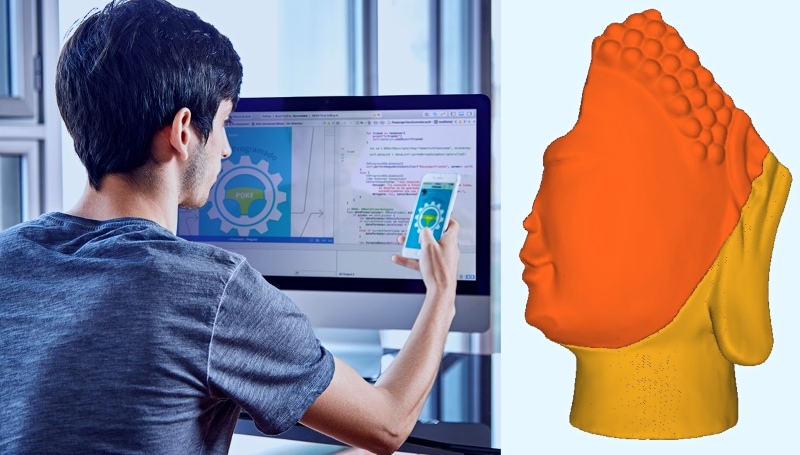Inca ships, colonial ornaments or monuments can now return to their original state, thanks to recent research in which Ariana Villegas, a computer science graduate student at the University of Engineering and Technology (UTEC), actively participated.
He, together with Prof. Cristian López del Alamo (UTEC) and Prof. Iván Cibran from the University of Chile, developed a 'paper' called 'MatchMakerNet: Implementing fragment matching for cultural heritage analysis'. There are fragments and fossils in their earliest form, such as those from ancient Greece or the Roman Empire that have been broken or destroyed over decades and centuries.
“Automating the reconstruction of fragmented objects is a complex task in the field of cultural heritage, paleontology and medicine. To address this gap, we have designed a network structure that will allow us to create a perfect match with all parts of its reconstruction.Ariana Villegas from UTEC explains.
Initially, a neural network called DGCNN was used. However, due to the complexity of the network and the large amount of data, the training time is prohibitive, which implies expenditure on computational resources; Also, the network lacks the ability to generalize well to new data.
Reconstructing students' memories: Neural network transformation
Faced with this problem, a team of researchers proposed to modify the DGCNN neural network, which is more efficient, making it smaller and faster. They called this variant 'MatchmakerNet'. “Imagine that the network is like a brain that evaluates whether two pieces match or not. Then, it's like taking two pieces of a broken cup and deciding whether they match perfectly or not. If the pieces match, the computer will indicate a '1', otherwise, a '0'.Details Prof. Lopez Del Alamo.
This new neural network model is more efficient than previous versions, achieving faster inference due to its reduced size. Being smaller made training faster, required less RAM and, above all, improved performance, allowing the model to be trained in one or two days instead of six.
Two different databases were used to test the model: 'Daily Puzzles 3D' and 'Breaking Bad'. The algorithm was implemented using modules from the ByTarch library and the UTEC Gibu server was used for training.
The second phase of the project includes Total restoration of materialUsing the accurate information obtained in the first step.
Restoration of Monuments: The Next Progress
The next step in this research involves projects Reconstruction of 3D objects Using diffusion method. “We promote the area of deep learning in geometry at UTEC. There are future plans like To reconfigure objects Recreate faces with the highest quality from sketches that speak to others, with missing parts; But they are still works in development with preliminary results. Undoubtedly this work is a Scientific contribution not only to Peru but to the whole world”, the author highlighted.

